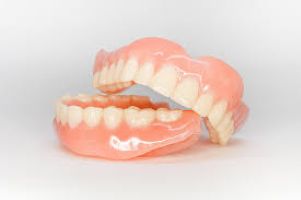Tooth decay is one of the most common dental problems people face today. Catching it early can save you from pain, expensive treatments, and serious complications down the road. This guide will help you recognize the warning signs your teeth may be trying to tell you. Understanding these symptoms means you can act quickly and find a reliable dental solution before minor issues become major problems. Read on to learn what to watch for and when to see your dentist.
Discoloration or Staining
When decay starts, you might notice unusual colors appearing on your teeth. These spots can be yellow, brown, or even black. This happens because acids from mouth bacteria break down your enamel. As the protective outer layer wears down, the yellower layer underneath begins to show through. These stains are often the first warning sign that something’s wrong. Don’t ignore them, see your dentist right away. Catching decay at this stage makes treatment much easier and less costly.
Sensitivity to Hot or Cold
Does drinking hot coffee or eating ice cream make you wince? This sensitivity often means your enamel is wearing thin. When the protective coating breaks down, the softer dentin layer underneath gets exposed. This lets temperature changes reach the nerve inside your tooth more easily. The result is that sharp, uncomfortable feeling. If you’re experiencing this issue, schedule a dental appointment as soon as possible. The sooner you address it, the better your chances are of stopping the decay.
Persistent Bad Breath
Persistent bad breath can be a sign of tooth decay. Bacteria in your mouth feed on food particles and release smelly gases in the process. Poor brushing habits, gum disease, or cavities can all cause this problem. When decay goes untreated, it creates an unpleasant odor as it gets worse. Don’t just mask the smell with mints or mouthwash. Regular brushing, flossing, and dental visits help prevent decay and keep your breath fresh. If bad breath persists despite good oral care, consult your dentist to determine the cause.
Toothache or Pain
A sharp or throbbing pain in your tooth is a clear sign that something’s wrong. You might feel it when eating hot, cold, sweet, or sour foods. Sometimes it hurts just from biting down. This occurs when decay reaches the inner part of your tooth, where the nerves reside. The pain can range from mild to severe, depending on the extent of the decay. Don’t wait and hope it goes away, it won’t. See your dentist promptly to address the issue before it worsens.
Visible Holes or Pits
Small holes or pits in your teeth mean decay has broken through the enamel. These cavities start tiny but grow larger if left alone. At first, you might barely notice them. Over time, they become more obvious. These holes are your tooth literally breaking down from the inside out. Getting them filled early prevents the decay from spreading deeper. Without treatment, you risk infection, severe pain, or even losing the tooth. Regular dental checkups help catch these cavities early when they’re easiest to treat.
Swollen or Bleeding Gums
Red, puffy, or bleeding gums often indicate gum disease, which frequently accompanies tooth decay. This occurs when plaque accumulates along your gumline, leading to inflammation. If you see blood when brushing or flossing, that’s your body’s warning signal. Left untreated, mild gum inflammation can progress to a more severe periodontal disease. Take care of your gums by brushing twice daily, flossing regularly, and seeing your dentist for cleanings. Eating well and avoiding tobacco also helps maintain healthy gums. If swelling or bleeding doesn’t stop, seek professional help to prevent more serious problems.
Related Topics:






